27 Photos Capturing Life In The 1950s In America
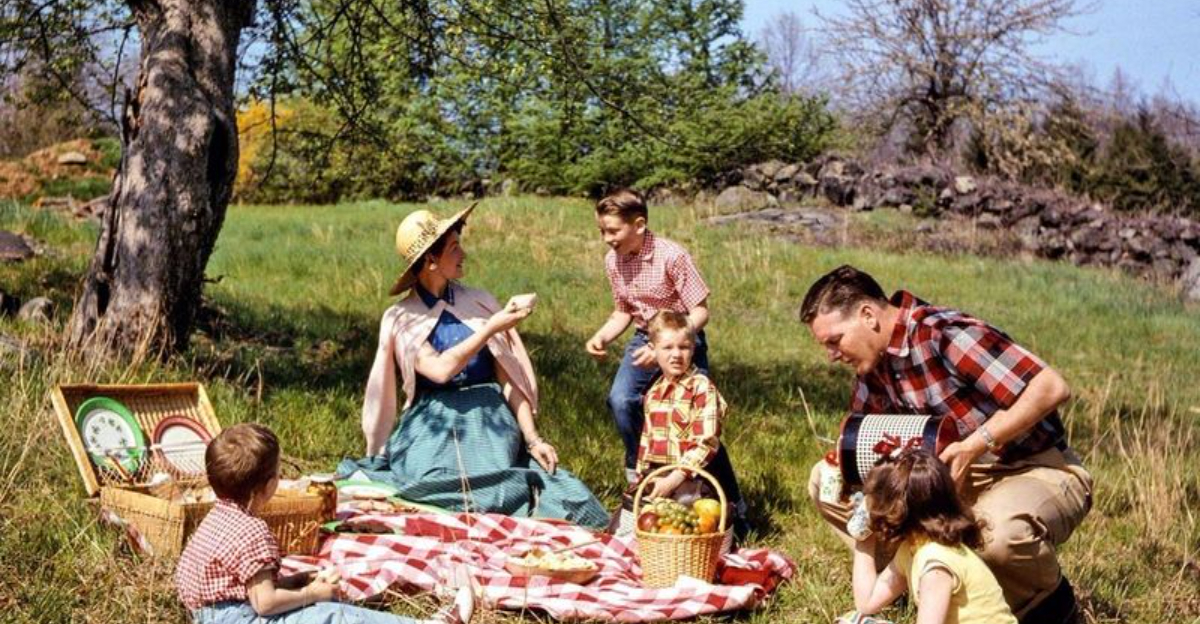
The 1950s in America were more than just poodle skirts and jukebox hits—they were a dazzling blend of optimism, innovation, and cultural shake-ups.
It was a time when families settled into freshly built suburbs, televisions flickered to life in living rooms, and Elvis made teenagers swoon while making parents raise an eyebrow. In the shadow of post-war relief, a new spirit began to stir—one that questioned norms, danced to a new beat, and planted the seeds of change.
Through thirty evocative photographs, we dive into a decade defined by its contrasts: the cheerful glow of backyard BBQs and sock hops side by side with the powerful momentum of the civil rights movement.
Each snapshot is a time machine, capturing both the surface charm and the deeper shifts shaping the American identity. So polish up that vintage lens and join me on this nostalgic tour through a time that still echoes in our culture today.
1. Suburban Bliss
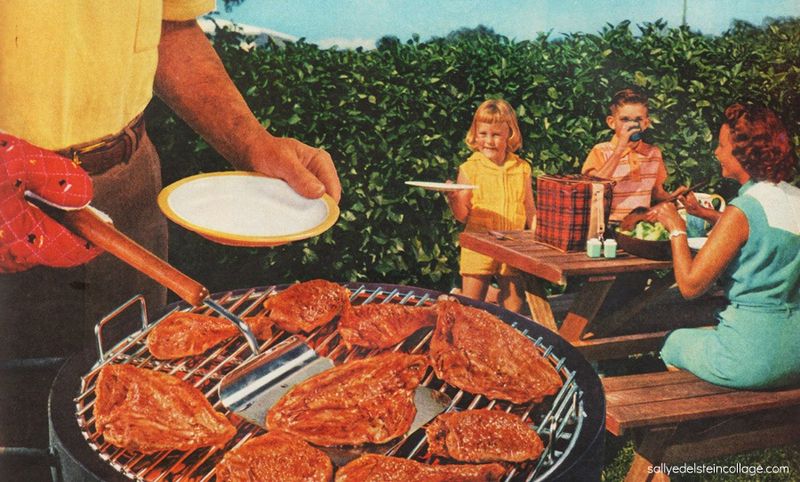
Ah, the 1950s, when backyard barbecues were as American as apple pie! Families flocked to newly minted suburbs, where white picket fences framed the American Dream. Picture this: Dad flipping burgers while Mom sets the picnic table, kids playing tag on the manicured lawn. It was a scene straight out of a Norman Rockwell painting, with the scent of grilled meat wafting through the air.
These gatherings weren’t just about food; they were about community. Neighbors would pop in, bringing potato salads and their latest tales. The sense of camaraderie was palpable, a testament to a shared pursuit of happiness and stability post-war.
Evenings often ended with sparklers and laughter, the perfect coda to a day well spent. These images of suburban life offer a window into a simpler time, where family and tradition reigned supreme.
Fun fact: The post-war economic boom made home ownership accessible to millions, fueling the suburban expansion!
2. Television Takeover
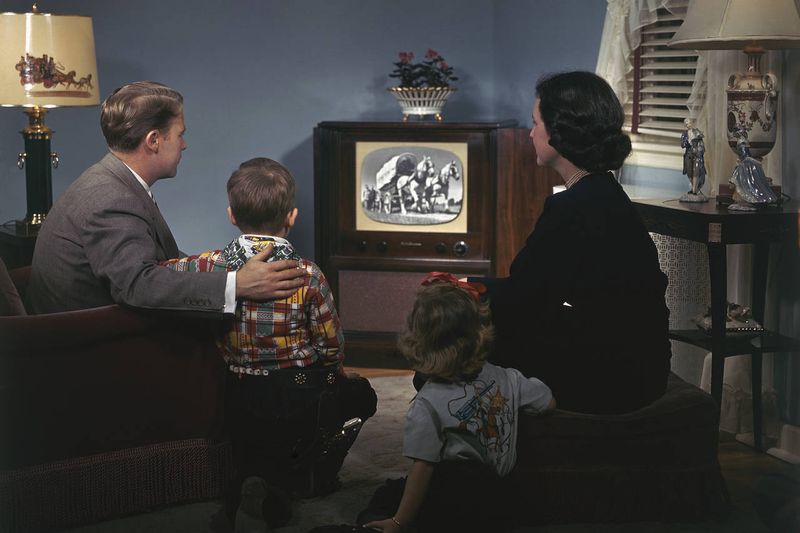
Remember when TV screens were a tiny piece of furniture? In the 1950s, television sets invaded living rooms with the same vigor as an alien spaceship landing. Families were mesmerized, gathering like moths to a flame, eyes glued to the black-and-white wonder.
This magical box brought the world to your home, introducing characters like Lucy and Beaver who became like extended family members. Dinner trays were essential, as TV dinners became the new norm; a hot meal and hot drama served simultaneously!
Television didn’t just entertain; it revolutionized advertising, making catchy jingles a permanent earworm. And let’s not forget the cultural influence—fashion, speech, even hairstyles were impacted by this new visual medium.
Did you know? By the end of the decade, an estimated 90% of American households owned a TV set, making it more of a necessity than a luxury!
3. Rock ‘n’ Roll Rebels
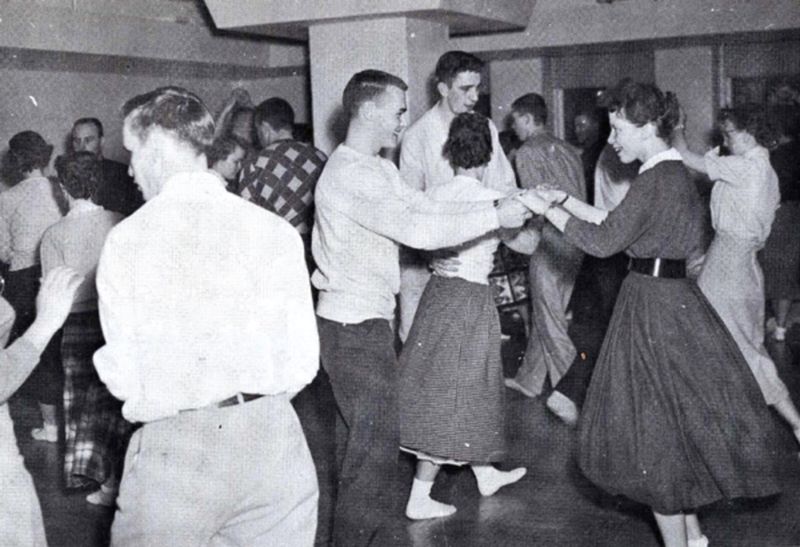
Who could resist the infectious beat of rock ‘n’ roll? Not the teenagers of the 1950s, that’s for sure! With the arrival of stars like Elvis Presley, the youth found their anthem and their rebellion. Sock hops became the place to be, as teens twirled and jived to the electrifying sound.
Fashion was as much a statement as the music: girls sported poodle skirts, while boys donned leather jackets, each outfit a nod to individuality and youthful defiance. These gatherings were more than dance parties; they were cultural revolutions in basements and gymnasiums across America.
The energy was palpable, a mix of teenage angst and exuberance. And the lyrics? Oh, they spoke volumes about young love and heartbreak.
Fun fact: Rock ‘n’ roll was initially coined as a slang term for dancing and having fun; little did anyone know it would become a global phenomenon!
4. Civil Rights March
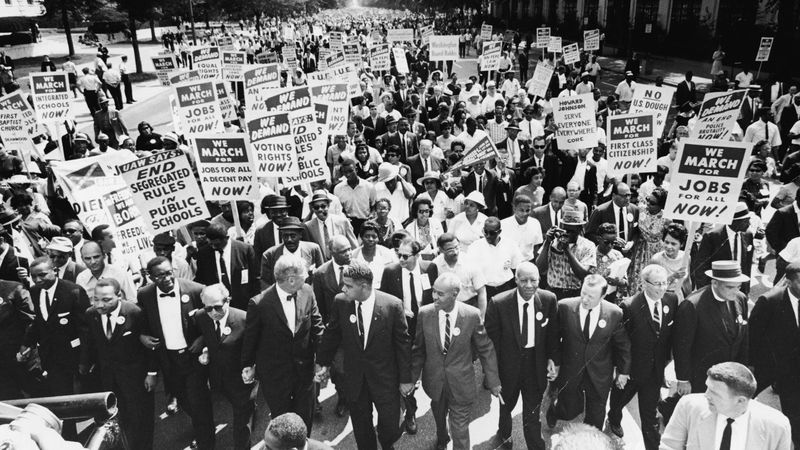
A photograph that echoes the power of persistence—civil rights marches in the 1950s were monumental. As African Americans fought for equality, every step taken was a step toward freedom. The Montgomery Bus Boycott and the Little Rock Nine’s bravery were captured on film, freezing their courage for eternity.
These images are more than historical documents; they’re a narrative of struggle and resilience. Faces united in determination, placards held high, the air thick with the desire for justice. The movement’s heartbeat was audible, a rhythmic protest against segregation and discrimination.
Such photographs transport us back to an era when change was a march, not a sprint. And in black and white, these moments are strikingly vivid, immortalizing the courage of those who dared to demand more.
Did you know? The Civil Rights Act of 1957 was the first federal civil rights legislation passed by the United States Congress since the Civil War!
5. Drive-in Theaters

Ah, the drive-in theater—a symbol of 1950s leisure and romance! Picture vintage cars lined up like ducks in a row, antennas twitching as families and young couples settled in for a movie under the stars. It was cinema with a side of nostalgia, where the big screen met the great outdoors.
Complete with popcorn and soda, the ambiance was unbeatable. The flickering light of the projector, the hum of conversation, and the occasional honk of a horn created a unique cinematic symphony. It wasn’t just about the film; it was an experience, a social gathering under a sky full of possibilities.
These theaters gave families a chance to escape, even if just for a few hours, into a world of fantasy and adventure. And for teenagers, well, it was the perfect date night!
Fun fact: Richard Hollingshead Jr. opened the first drive-in theater in Camden, New Jersey, in 1933, and by the 1950s, they were a staple of American culture!
6. Beatnik Coffeehouses
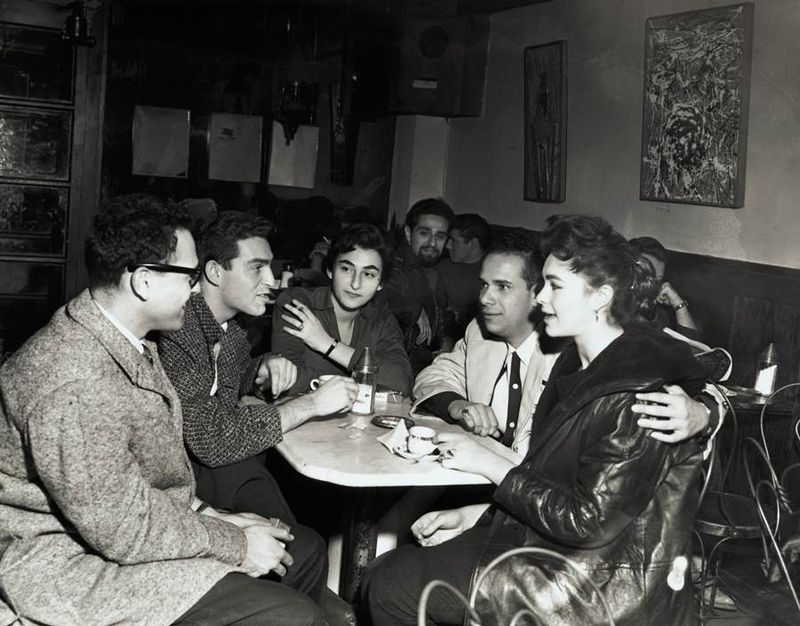
Snap your fingers and grab a bongo! The 1950s gave birth to the beatnik, a counterculture characterized by its love for poetry, jazz, and existential musings. Coffeehouses became the sanctuaries for these free spirits, offering a space to express and challenge societal norms.
In dimly lit rooms, the air was thick with the aroma of coffee and revolution. Young adults, clad in black turtlenecks and berets, congregated to share their angst and creativity. Beat poetry, often recited with fervor, addressed everything from love to politics, a verbal jazz that disrupted conventional thought.
These gatherings were electric, a mix of introspection and rebellion. The beatnik movement paved the way for future countercultures, proving that art could be as powerful as the written word
Fun fact: The term “beatnik” was coined by San Francisco columnist Herb Caen in 1958, combining “beat” from beat generation and the “-nik” of Sputnik!
7. Fashion Revolution
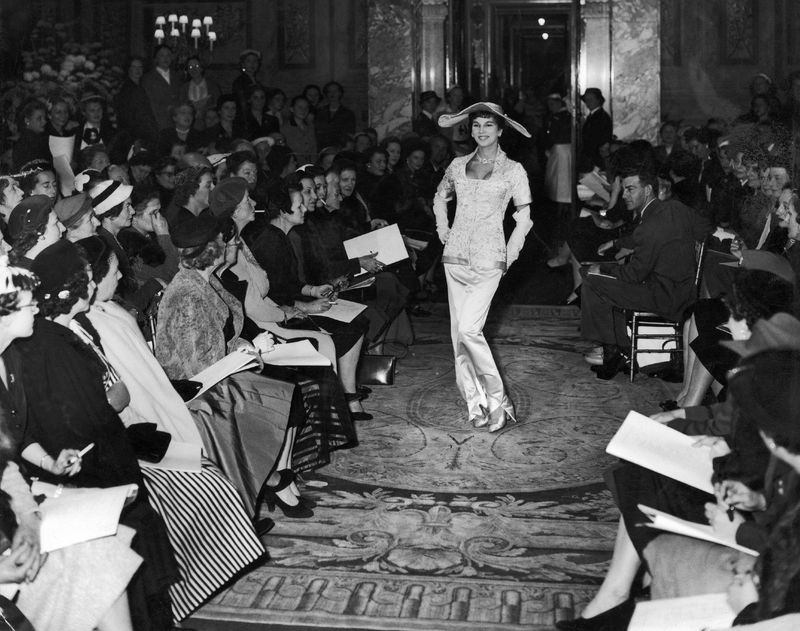
Who knew fashion could be such a whirlwind of fun? The 1950s redefined style with its bold colors and playful designs, leaving a sartorial legacy that still resonates today. Poodle skirts, saddle shoes, and pillbox hats became synonymous with the decade’s charm.
Fashion shows were lively affairs, with models strutting in outfits that celebrated post-war prosperity. Every garment told a story, from the elegant suits of working women to the rebellious leather jackets of teenage boys. The era’s fashion was a reflection of societal shifts, a visual narrative of optimism and exploration.
And let’s not forget the hairstyles—bouffants and pompadours towering like architectural feats, setting the standard for hair volume for decades to come.
Did you know? Christian Dior’s “New Look,” introduced in 1947, continued to influence ’50s fashion with its hourglass silhouette, emphasizing femininity and elegance!
8. Elvis Mania
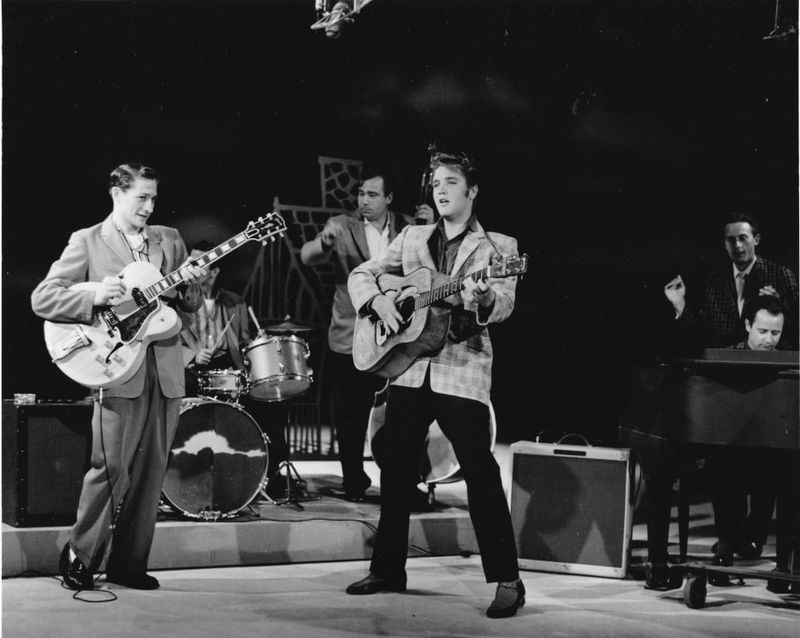
Elvis Presley didn’t just shake his hips; he shook the world! In the 1950s, Elvis mania swept across America like a fever. With his sultry voice and rebellious swagger, he became the King of Rock ‘n’ Roll, capturing the hearts of teenagers and the ire of conservative parents.
Concerts were a frenzy of excitement, with fans screaming and swooning at every swivel of his hips. His music transcended boundaries, blending genres to create a sound that was uniquely his own. Songs like “Heartbreak Hotel” and “Jailhouse Rock” became anthems of a generation, expressing the joys and angst of adolescence.
Elvis’ influence extended beyond music, shaping fashion, dance, and even language. He was a cultural phenomenon, a symbol of youthful rebellion and charisma.
Fun fact: Elvis’ 1956 appearance on “The Ed Sullivan Show” was watched by over 60 million people, cementing his status as a national icon!
9. Kitchen of the Future
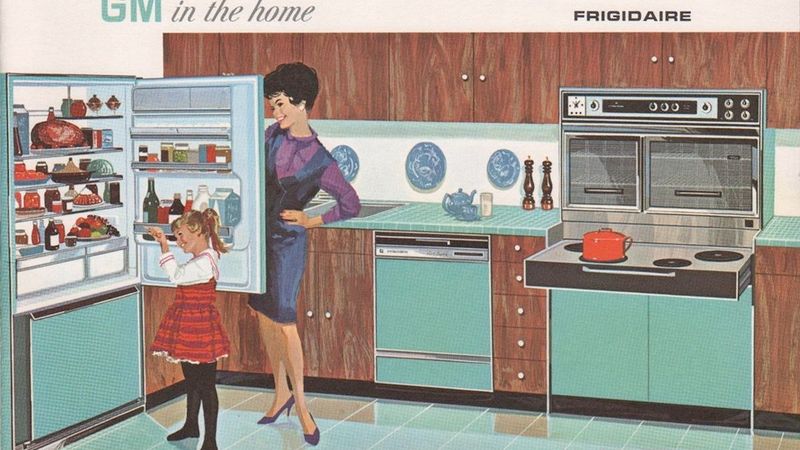
Step into the kitchen of the future—1950s style! This decade saw the rise of consumerism, with kitchens becoming showcases of modern technology. Shiny new appliances like refrigerators and electric stoves boasted both function and form, promising to make the homemaker’s life easier.
The kitchen was more than a place to cook; it was a stage for the latest gadgets. Advertisements promised a utopia of efficiency and style, where the clatter of pots was replaced by the hum of progress. Bright colors and bold designs mirrored the era’s optimism, transforming kitchens into vibrant spaces.
And who could forget the rise of convenience foods? TV dinners and Jell-O molds became culinary staples, reflecting a society on the move.
Did you know? The introduction of Tupperware parties in the 1950s revolutionized home storage, turning food preservation into a social event!
10. Classic Diners
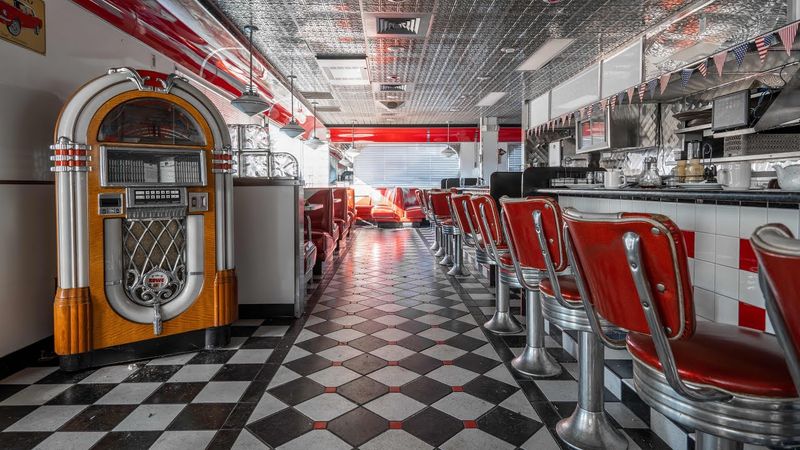
Fancy a milkshake with a side of nostalgia? The 1950s diner was an American icon, a place where neon lights and chrome fixtures set the stage for culinary delight. Waitresses in crisp uniforms served up classic burgers and fries, while the jukebox played the hits of the day.
These diners were social hubs, where friends gathered to laugh, eat, and share stories. Whether it was a post-movie snack or a late-night rendezvous, the atmosphere was always buzzing with life and energy.
The menu was a celebration of simplicity, with comfort food that warmed both the heart and the stomach. And let’s not forget the pies—a slice of heaven with every forkful.
Fun fact: The first diner was created in 1872 by Walter Scott, who served food from a converted horse-drawn wagon in Providence, Rhode Island, paving the way for the diners we love today!
11. Space Race Begins
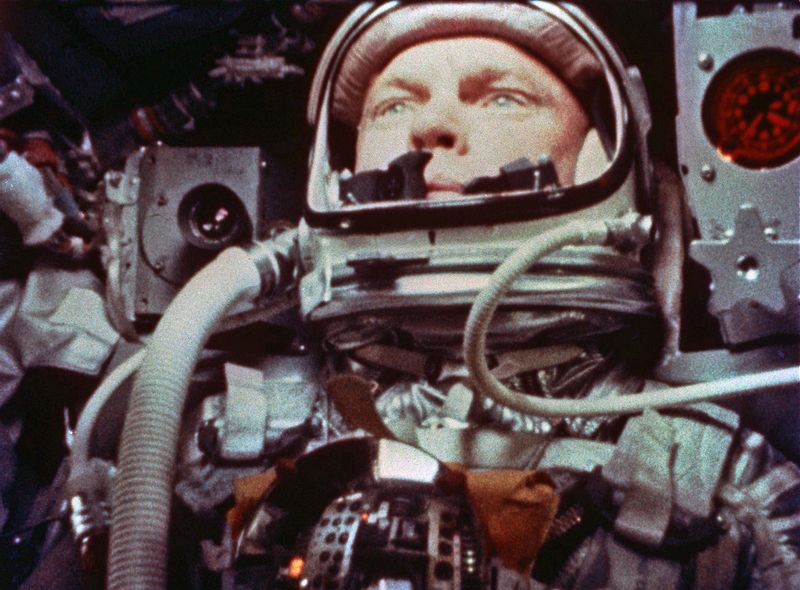
To infinity and beyond! The 1950s marked the dawn of the space race, as America set its sights on the stars. Scientists and engineers worked tirelessly on early space technology, driven by the dream of exploration and the challenge of Soviet competition.
This era witnessed the birth of NASA in 1958, a monumental step in America’s quest to conquer the final frontier. The excitement was palpable, as news of satellite launches and rocket tests captivated the nation.
The space race wasn’t just about technology; it was a cultural phenomenon, inspiring everything from fashion to film. The dream of space travel ignited imaginations and fueled a sense of wonder and possibility.
Did you know? The launch of Sputnik by the Soviet Union in 1957 catalyzed America’s commitment to space exploration, leading to significant advancements in science and technology!
12. Picnics in the Park
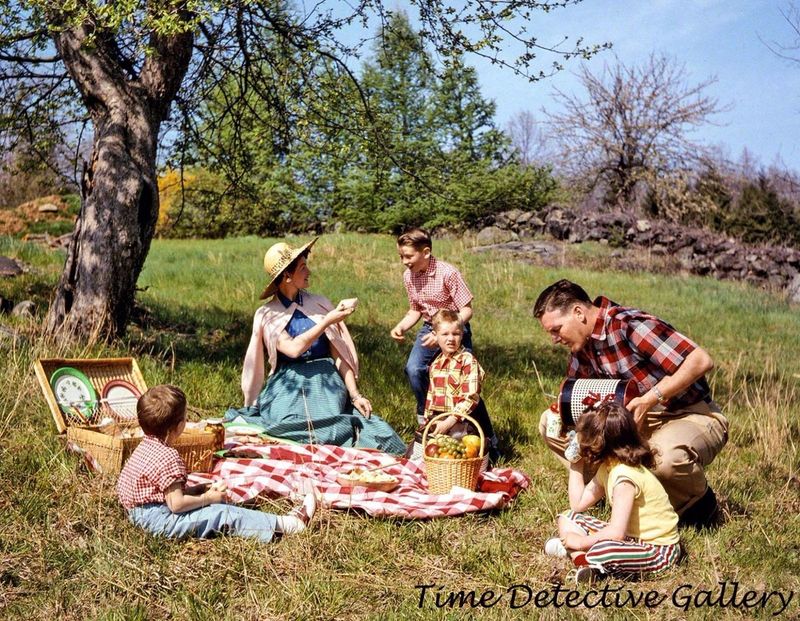
What could be more idyllic than a 1950s picnic in the park? A wicker basket filled with sandwiches and lemonade, a blanket spread under a shady tree, and laughter echoing through the air. Families gathered in parks for these simple pleasures, embracing the joys of nature and togetherness.
Children ran and played, their giggles a symphony of innocence and joy. Parents relaxed, soaking in the tranquility and taking a break from the hustle and bustle of daily life.
These outings were a celebration of the great outdoors, a reminder to savor life’s simple moments. The tradition of picnicking brought communities together, creating memories that lingered long after the sun set.
Fun fact: The word “picnic” is derived from the French term “pique-nique,” which referred to a social gathering where everyone contributed a dish!
13. Car Culture Craze
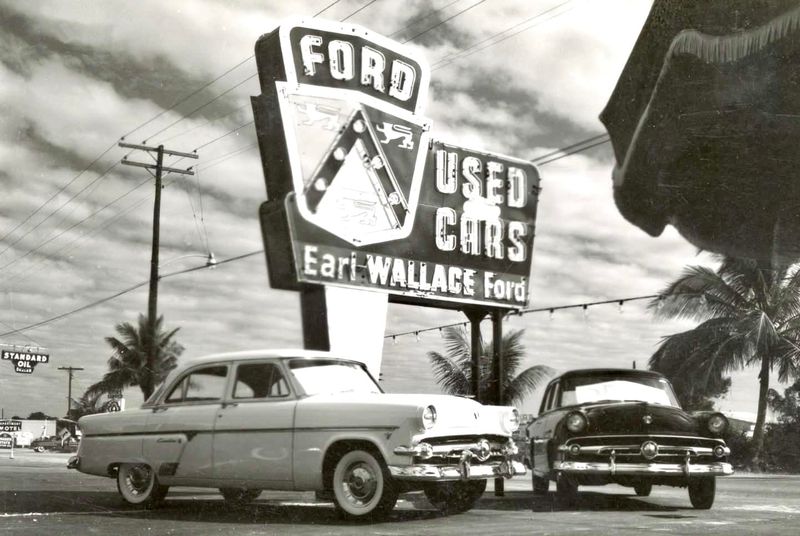
Vroom vroom! The 1950s roared with the sound of engines as car culture took America by storm. Teenagers cruised down Main Street in their classic cars, freedom and adventure packed into every mile.
Cars became symbols of individuality and status, with each model boasting sleek designs and chrome detailing. Whether it was a Chevy Bel Air or a Ford Thunderbird, these vehicles were more than transportation; they were extensions of personality.
The drive-in diner became the hangout of choice, where car hops served milkshakes and burgers to teens eager to show off their wheels. It was an era where the road was open, and the possibilities were endless.
Fun fact: The introduction of the Interstate Highway System in 1956 revolutionized travel, connecting cities and changing the American landscape forever!
14. School Integration
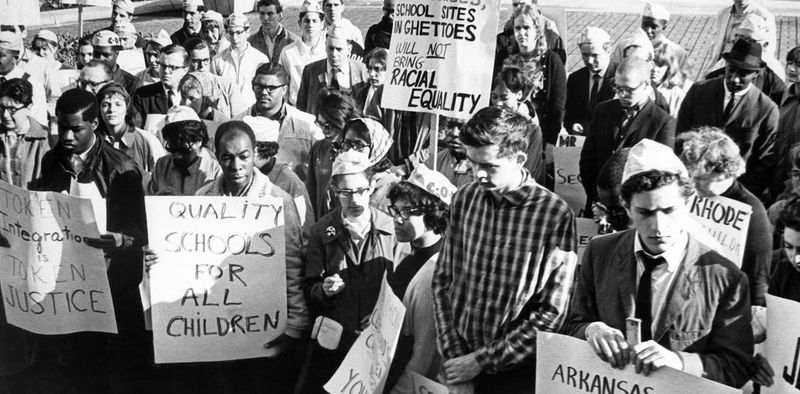
A classroom photograph that changed history—school integration in the 1950s was a pivotal moment in the Civil Rights Movement. As brave students walked into newly integrated schools, they broke barriers and set precedents for equality.
These images captured the courage and resilience of young pioneers, whose education became a battleground for social change. They faced adversity with strength, their presence a silent protest against segregation.
The significance of these photographs extends beyond the classroom. They symbolize a nation’s struggle and triumph in its fight for justice and equality, highlighting the power of youth-led movements.
Did you know? The landmark Brown v. Board of Education Supreme Court decision in 1954 declared state laws establishing separate public schools for black and white students to be unconstitutional!
15. Teenage Hangouts
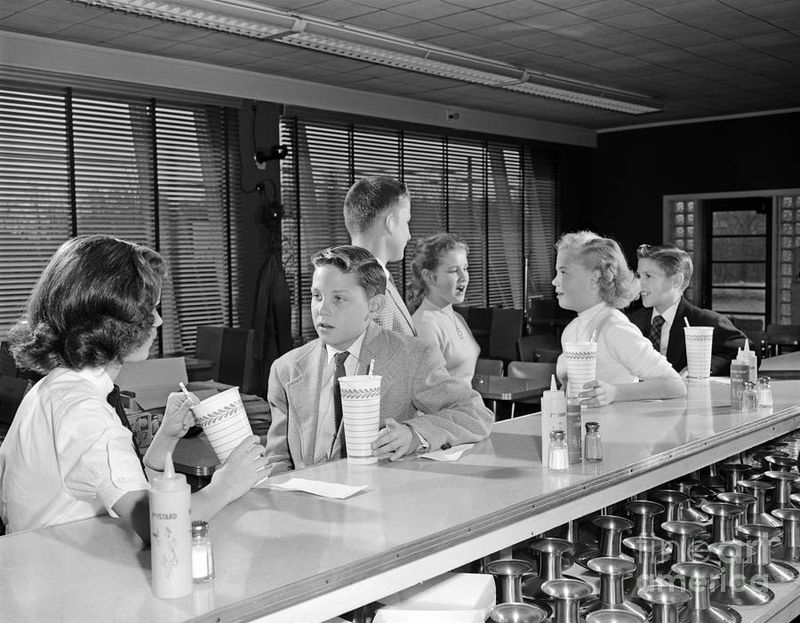
Pull up a stool and order a malt—teenage hangouts in the 1950s were the epicenter of youthful energy and camaraderie. Soda fountains offered the perfect backdrop for socializing, with their shiny counters and fizzy drinks.
Letterman jackets and poodle skirts were the uniforms of choice, as teens gathered to chat, laugh, and listen to the latest tunes on the jukebox. These venues were more than eateries; they were social hubs, where friendships were forged over milkshakes and burgers.
The atmosphere was electric, a tapestry of laughter and music that defined a generation. These hangouts were the heart of teenage culture, a place where dreams and ambitions were shared over a shared straw.
Fun fact: The first soda fountain is thought to have been built by Samuel Fahnestock in 1819, and by the 1950s, they were a staple in American towns!
16. Baseball Americana
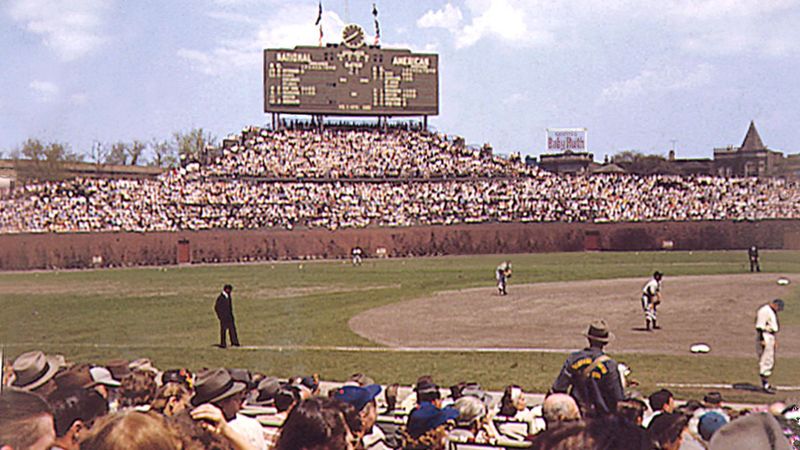
Play ball! The 1950s were a golden era for baseball, America’s pastime. Ballparks echoed with the cheers of fans as players in classic uniforms took to the field, each game a spectacle of skill and excitement.
Baseball was more than a sport; it was a cultural institution, a reflection of American values and community spirit. Families gathered to watch their favorite teams, sharing peanuts and stories in the stands.
Icons like Mickey Mantle and Jackie Robinson graced the fields, their prowess and sportsmanship inspiring generations. These games were moments of unity and celebration, where the crack of the bat resonated with hope and possibility.
Did you know? Jackie Robinson broke the baseball color line in 1947, and by the 1950s, he was a celebrated legend, paving the way for future African American athletes!
17. National Parks Visits
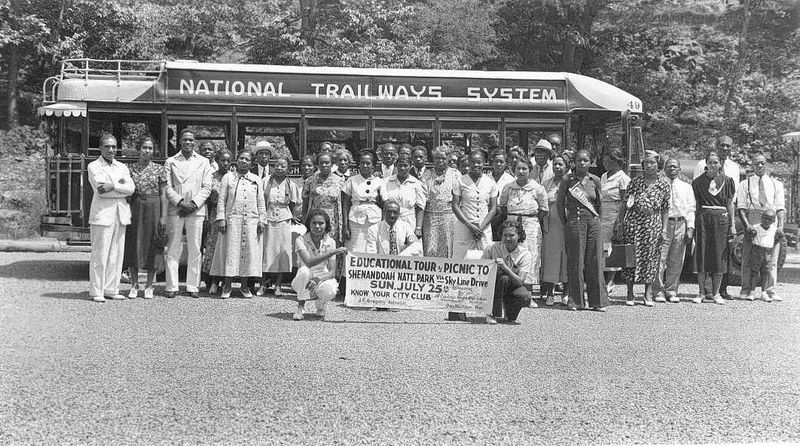
Into the wild with a 1950s flair! Families flocked to national parks, embracing the beauty of America’s natural wonders. With a vintage car packed to the brim, they set off on adventures that promised awe and discovery.
These trips were opportunities for bonding and learning, as children explored trails and adults marveled at scenic vistas. The grandeur of nature offered a reprieve from the hustle of daily life, a chance to reconnect with the land and each other.
Photographs from these excursions capture the essence of the era—a blend of exploration and family fun. The national park visits were more than vacations; they were journeys into the heart of the American landscape.
Fun fact: The National Park Service, established in 1916, celebrated its 40th anniversary in the 1950s, marking decades of conservation and exploration!
18. Home Economics Classes
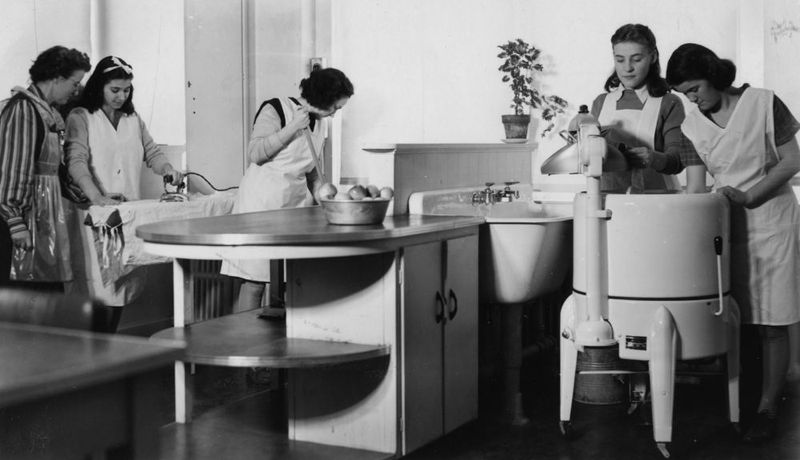
An apron here, a sewing machine there—home economics classes in the 1950s were a rite of passage for students. These classes equipped young people with practical skills, from cooking to sewing, preparing them for life’s domestic challenges.
The classrooms were a flurry of activity, as students learned the fine art of baking a cake or patching a sock. These lessons went beyond the technical; they instilled values of resourcefulness and creativity.
For many, home economics was both an education and an art form, a blend of tradition and innovation that celebrated everyday skills. And while times have changed, these classes remain a nostalgic reminder of a bygone era.
Did you know? The term “home economics” was coined in 1899, and by the 1950s, it was a staple in school curricula, emphasizing the importance of domestic science!
19. Fishing Trips
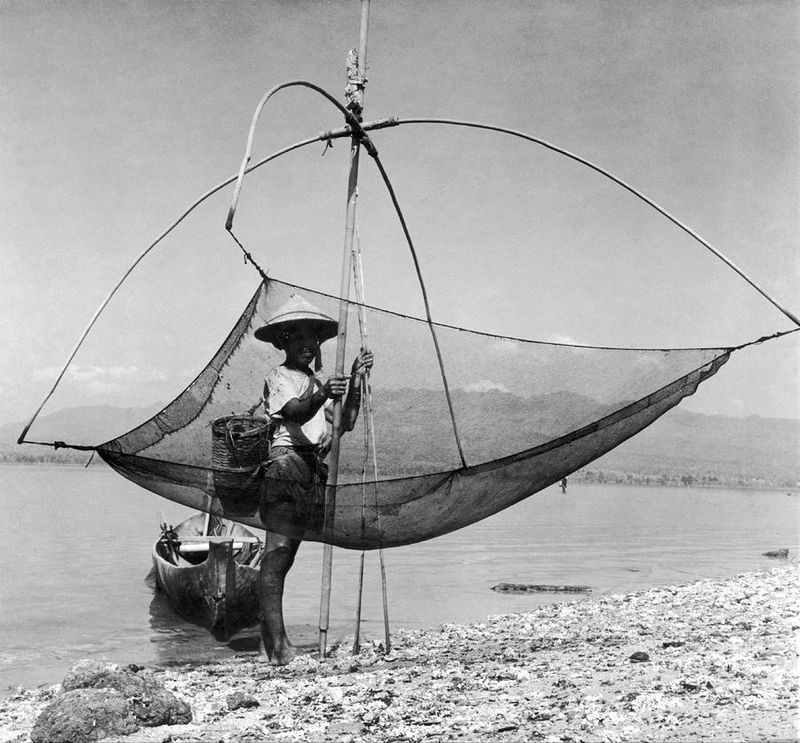
Gone fishin’! The 1950s saw families embracing the great outdoors, and fishing trips became cherished traditions. Fathers and sons, in particular, bonded over these excursions, casting lines and sharing stories by the water’s edge.
The rhythm of the lake, the whisper of the wind, and the anticipation of a catch created an atmosphere of tranquility and excitement. These trips were moments of connection, where life lessons were learned and memories were made.
Fishing was more than a pastime; it was a rite of passage, a way to unplug and enjoy the simplicity of nature. The photographs of these trips capture the essence of familial love and the joys of spending time together.
Fun fact: The 1950s saw the development of the fiberglass fishing rod, revolutionizing the sport and making it more accessible to enthusiasts!
20. Community Parades
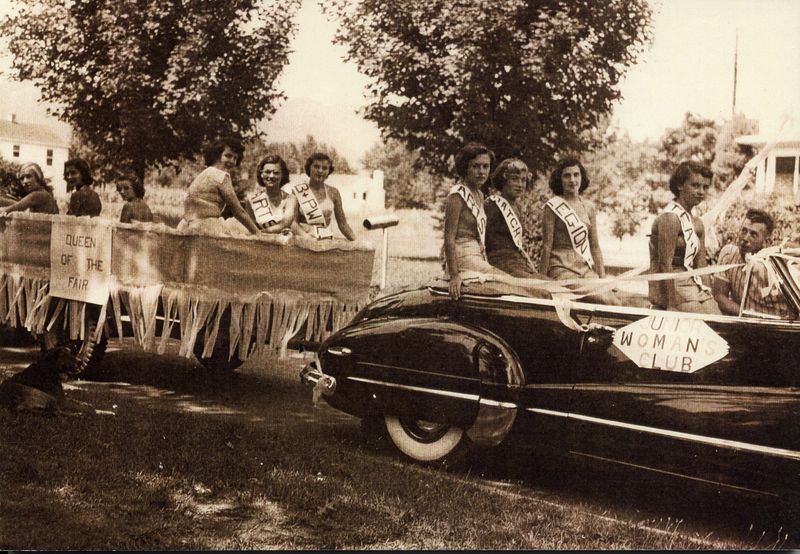
Parade time! The 1950s were renowned for their vibrant community parades, where marching bands and floats brought towns to life. These events were celebrations of local pride, drawing families to the streets in joyful anticipation.
Children watched wide-eyed as performers passed by, their imaginations captured by the spectacle. The sound of the band and the sight of colorful floats created an atmosphere of festivity and unity.
Parades were more than entertainment; they were opportunities for communities to come together, fostering a sense of belonging and shared identity. These festivities remain cherished memories, emblematic of the era’s spirit of togetherness.
Fun fact: The tradition of parades dates back to ancient times, but in the 1950s, they became a hallmark of American culture, celebrating everything from holidays to local achievements!
21. Polio Vaccination
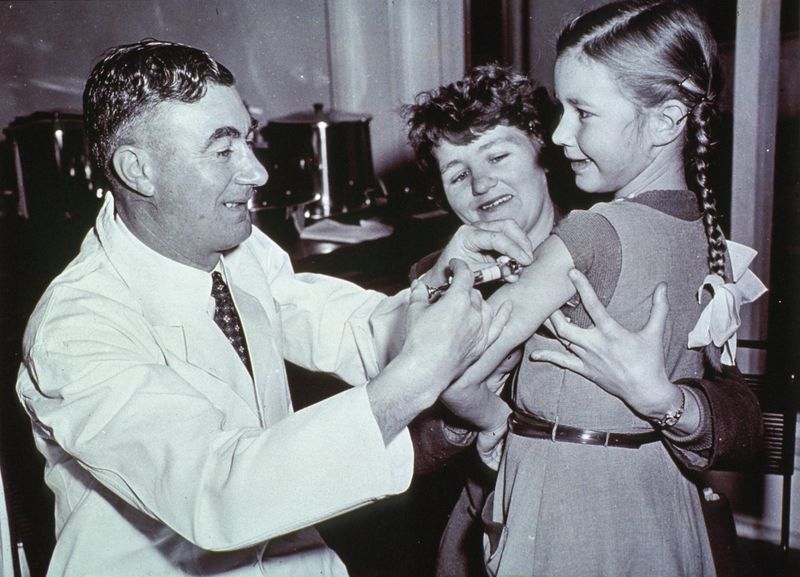
A needle that changed the world—the 1950s marked a turning point in the fight against polio. With the introduction of the polio vaccine by Dr. Jonas Salk, hope spread as quickly as the disease had.
Vaccination clinics were scenes of relief and anticipation, as parents lined up to protect their children from the crippling illness. The medical breakthrough was hailed as a miracle, a testament to human ingenuity and compassion.
The photographs of these clinics capture the era’s collective sigh of relief and the joy of a future free from fear. This medical milestone remains a testament to perseverance and progress.
Did you know? The first polio vaccine was introduced in 1955, leading to a dramatic decline in cases and paving the way for near-eradication of the disease!
22. School Dances
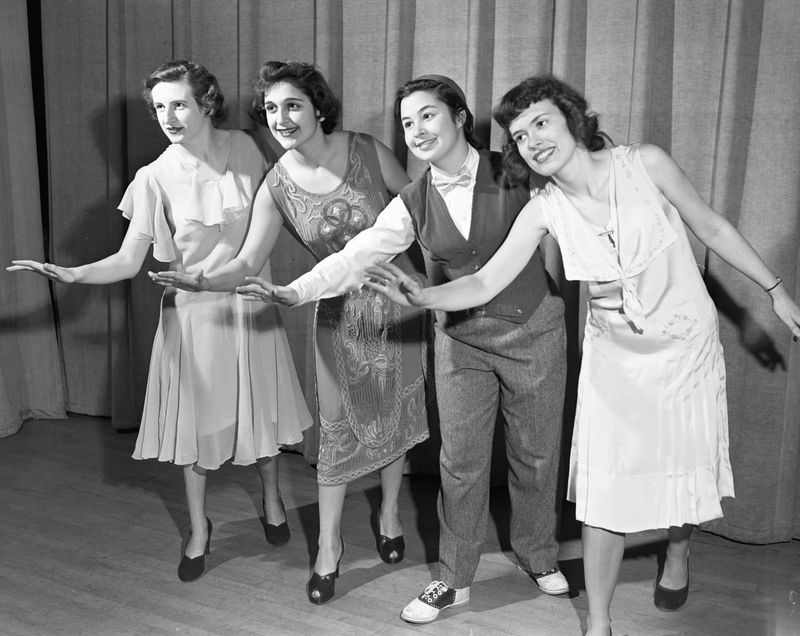
Shall we dance? School dances in the 1950s were the epitome of teenage romance and excitement. Held in gymnasiums decorated with streamers and balloons, these events were social highlights of the school year.
Students donned their finest attire, the boys in suits and the girls in dresses, transforming the gym into a scene of elegance and youthful exuberance. A live band provided the soundtrack, with slow dances and upbeat numbers that got everyone on their feet.
These dances were more than just a night out; they were rites of passage, opportunities for teens to socialize and create lasting memories. The thrill of asking someone to dance, the tentative first steps on the dance floor—it was all part of the magic of growing up.
Fun fact: The popularity of dance styles like the Jitterbug and the Twist in the 1950s set the stage for the dance crazes that would follow in the ’60s and beyond!
23. Amusement Parks
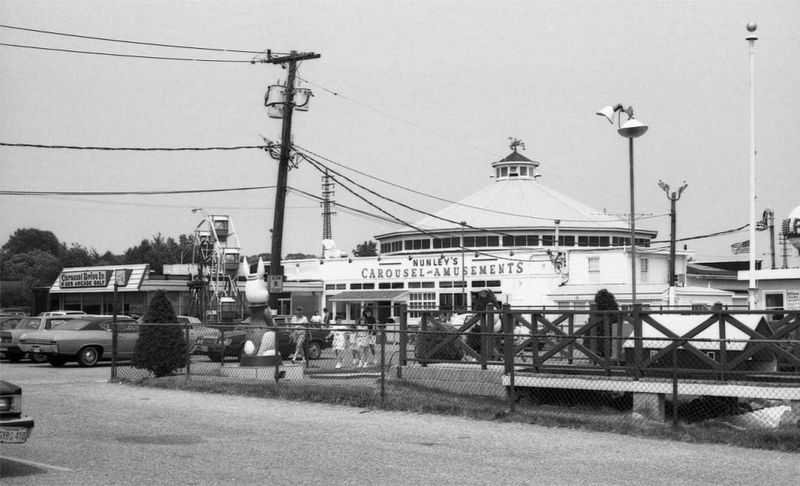
Step right up! Amusement parks in the 1950s were wonderlands of joy and excitement, where families flocked for a day of fun and adventure. With roller coasters, Ferris wheels, and carnival games, these parks were the perfect escape from everyday life.
The air was filled with the scent of popcorn and cotton candy, and laughter echoed as children ran from ride to ride. The bright lights and lively music created an atmosphere of magic and wonder, captivating visitors of all ages.
These parks were more than entertainment venues; they were places where memories were made and cherished. The thrill of a roller coaster ride, the delight of winning a prize—it was all part of the enchantment of the amusement park experience.
Fun fact: Disneyland opened its doors in 1955, revolutionizing the amusement park industry and setting the standard for theme parks around the world!
24. Sunday Church Services
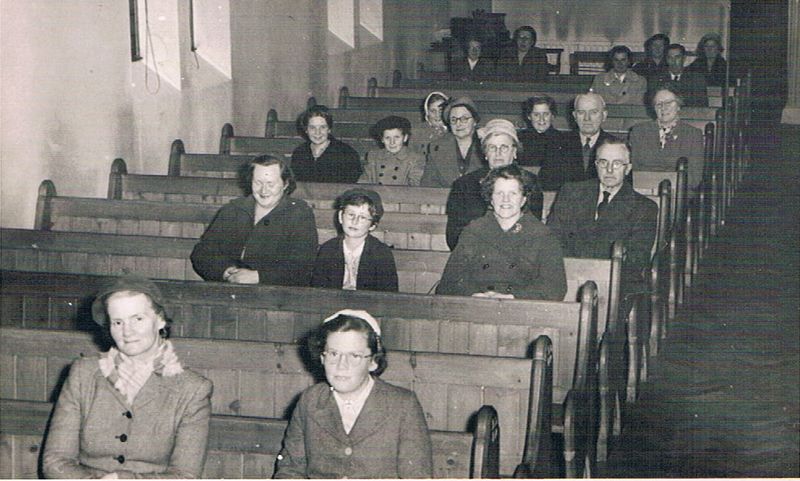
Sunday best and heavenly rest—church services in the 1950s were cornerstone events of community life. Families dressed in their finest attire, gathering to worship and connect with their neighbors.
The church was more than a place of worship; it was a social hub, where friendships were forged and community bonds strengthened. Sermons delivered messages of hope and unity, resonating with the congregation.
The beauty of the stained-glass windows, the harmony of the choir, and the warmth of fellowship created an atmosphere of peace and reflection. These services were moments of spiritual nourishment and communal joy.
Did you know? The 1950s saw a rise in church attendance across America, as post-war prosperity and the search for meaning led many to seek solace and community in religious institutions!
25. Telegraph to Telephone
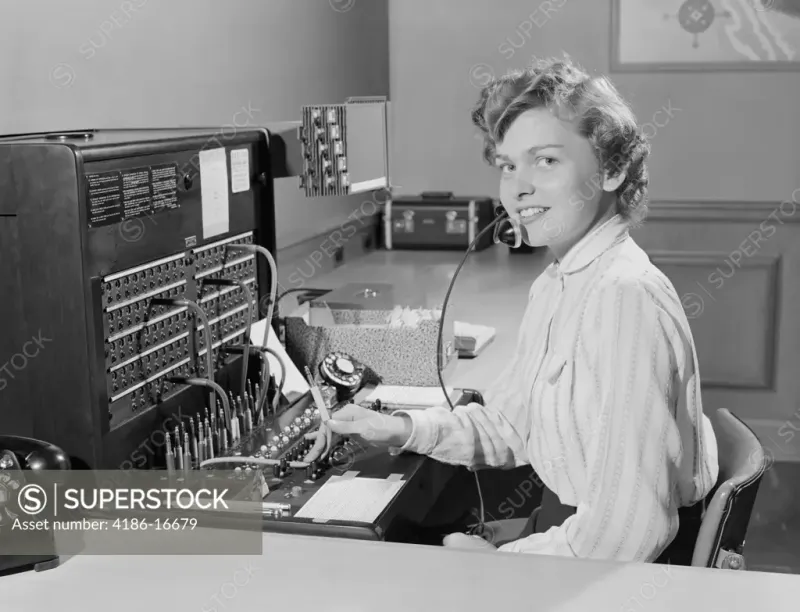
Ring ring! The 1950s were a decade of communication evolution, as the telephone became a household necessity, replacing the once-dominant telegraph. Switchboards buzzed with activity as operators connected calls, bringing voices together from miles apart.
This transition marked a new era of connectivity, where conversations flowed with ease and immediacy. Families could stay in touch, businesses could expand, and information traveled at the speed of sound.
The telephone revolutionized communication, transforming how people interacted and reshaping social dynamics. It was a leap into the modern age, where distance was no longer a barrier to conversation.
Fun fact: The introduction of the area code system in the 1950s allowed for more efficient call routing, a precursor to the direct-dialing systems we use today!
26. Bowling Alleys
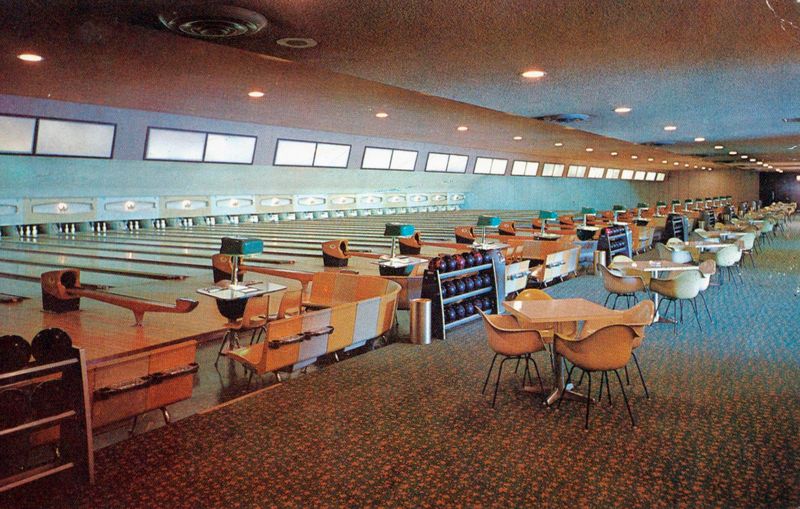
Strike! Bowling alleys in the 1950s were vibrant centers of leisure, where families and friends gathered for a game and a good time. The clatter of pins and the cheers of players created an atmosphere of fun and camaraderie.
Traditional bowling attire—bright shirts and saddle shoes—added to the charm, as players aimed for that perfect strike. These alleys were more than sports venues; they were social spaces where stories were shared and rivalries were born.
Bowling became a beloved pastime, a way for people to unwind and connect. The simplicity of the game and the joy of competition brought communities together, one frame at a time.
Did you know? The 1950s saw a surge in the popularity of bowling, with the American Bowling Congress reporting millions of members and the sport becoming a staple of American recreation!
27. Home Movie Nights
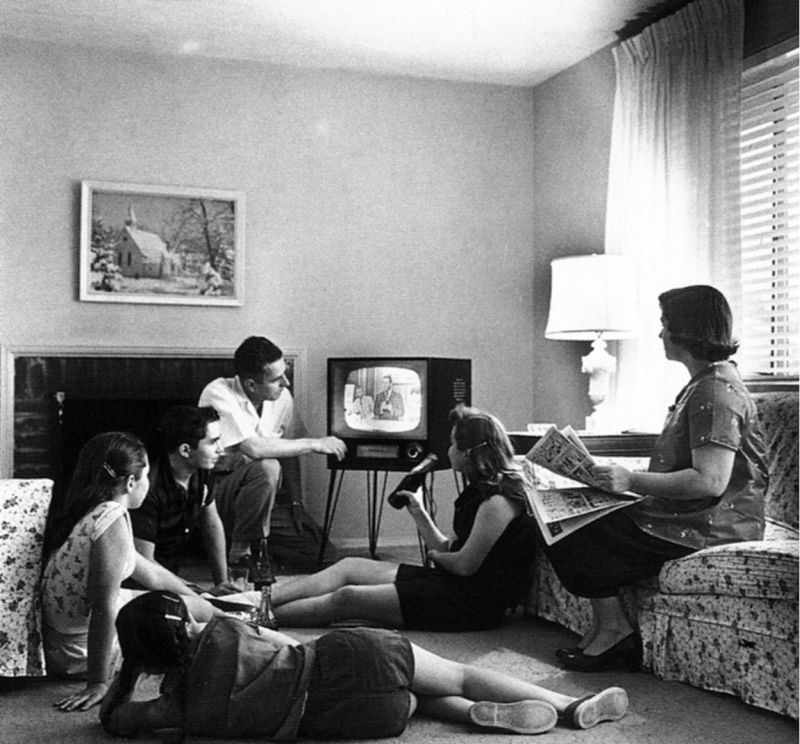
Lights, camera, nostalgia! Home movie nights in the 1950s were cherished family traditions, where memories came to life in the comfort of the living room. A projector, a screen, and a reel of film were all it took to transport families into a world of shared experiences.
These nights were filled with laughter and storytelling, as families gathered to watch home movies and relive cherished moments. The flickering images and the hum of the projector created an ambiance of warmth and intimacy.
Home movies were more than entertainment; they were time capsules, preserving family history and capturing the essence of everyday life. The tradition of movie nights brought families closer, creating bonds that transcended generations.
Fun fact: The development of 8mm film in the 1930s made home movie-making more accessible, and by the 1950s, it had become a popular hobby for capturing life’s special moments!
